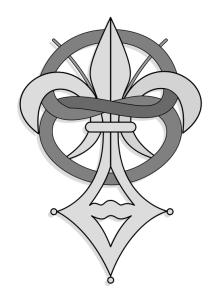Priory of Sion
From Wikipedia, the free encyclopedia

The official emblem of the Priory of Sion is partly based on the fleur-de-lis, which was a symbol particularly associated with the French monarchy.[1]
After becoming a cause célèbre from the late 1960s to the 1980s, the mythical Priory of Sion was exposed as a ludibrium created by Plantard as a framework for his false pretension to the French throne.[4] Evidence presented in support of its historical existence and activities before 1956 was discovered to have been forged and then planted in various locations around France by Plantard and his accomplices. Nevertheless, many conspiracy theorists still persist in believing that the Priory of Sion is an age-old cabal that conceals a subversive secret.[5]
The Priory of Sion myth has been exhaustively debunked by journalists and scholars as one of the great hoaxes of the 20th century.[6] Some skeptics have expressed concern that the proliferation and popularity of books, websites and films inspired by this hoax have contributed to the problem of conspiracy theories, pseudohistory and other confusions becoming more mainstream.[7] Others are troubled by the romantic reactionary ideology unwittingly promoted in these works.[8]
No comments:
Post a Comment